Among many beautiful things in the photographer François Halard’s house in Arles is a lemon so decomposed it resembles an old potato, dug up several seasons too late, more than anything remotely citrusy. This relic, however, is one of the photographer’s most treasured possessions, given to him (fresh) by Cy Twombly more than 15 years ago. ‘Only I know that it was a gift from Cy,’ Halard says, expressing something of what connects every object he owns, whether it’s an African mask (‘that collection started when I did a story about Man Ray’) or work by artist friends such as Julian Schnabel and Miquel Barceló: nothing here is valued for its aesthetic – or indeed monetary – value alone, but first and foremost for a memory or association it might spark. You can’t move, chez Halard, for Proustian madeleines.
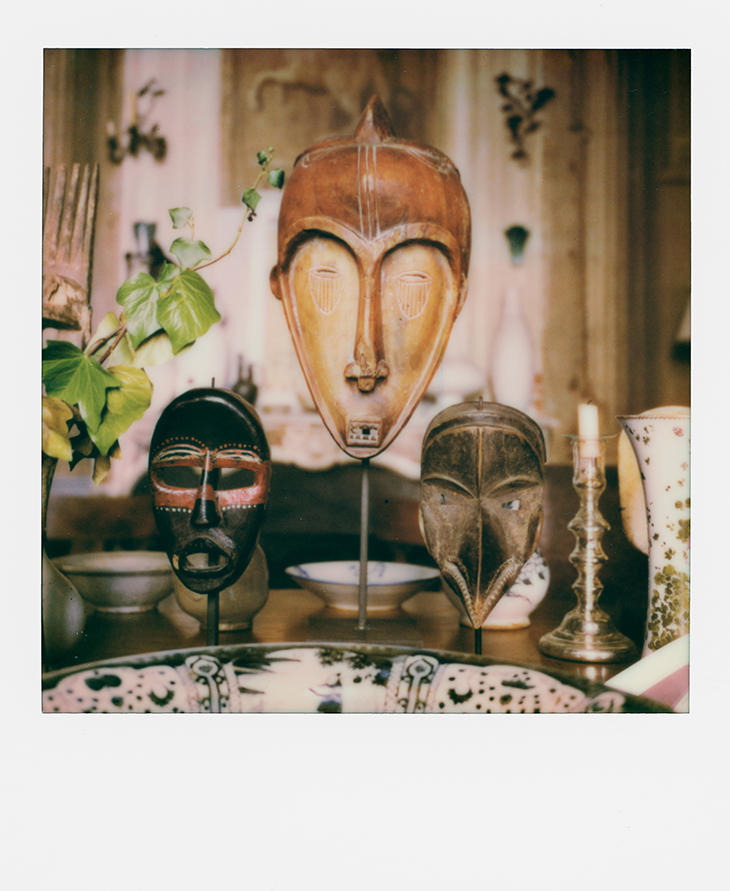
Photo: © 2021 François Halard and Libraryman
That piece of rotten fruit in its ceramic blue bowl is visible in one of 56 Polaroids that Halard made of his 18th-century hôtel particulier between 16 March and 10 May last year, during France’s first lockdown. As one of the most sought-after interiors photographers working today, Halard is rarely not travelling; so this enforced confinement was, he says, an opportunity ‘to look at the light coming into the house, to look at books in my library, to have another way of looking at time’. And with film-processing labs closed, the Polaroid project – encouraged by his friend and occasional collaborator (and former Apollo editor) Oscar Humphries – was also a way to keep working. ‘It was a way to have an excitement every day,’ Halard explains, ‘to do something amusing, interesting, like a diary.’ The hazy, dreamlike quality of these images perfectly expresses their creator’s preoccupation with memories and imagination, seemingly harking back to an early interest in the photographs of Deborah Turbeville. ‘I have always loved the idea of something blurry,’ Halard says, ‘where you don’t know exactly what you’re looking at – it’s not descriptive.’ While the original Polaroids Halard took have since been exhibited and sold, the images have now been printed in a photobook, François Halard: 56 Days in Arles, produced by the Antwerp-based publisher Libraryman. Cloth-bound, with cyan-blue endpapers, the book is a suitably beautiful object in itself.
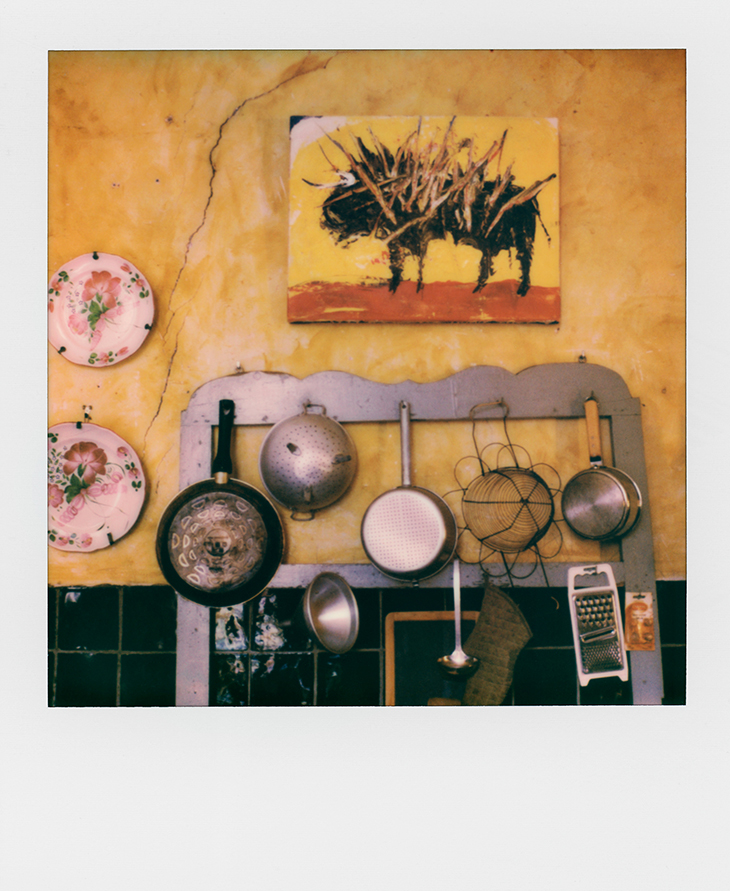
Photo: © 2021 François Halard and Libraryman
The Polaroid format is, of course, more object-like than any other kind of photographic print. As someone who continues to work only with film (‘I’ve never used digital. It doesn’t really inspire me, it’s too clean’), Halard is used to using these instant photos as an everyday tool: for a professional film photographer they serve as handy test shots before committing to an exposure on a roll. But he has a more poetic relationship with the format, too, collecting Polaroids by other artists he admires, among them Helmut Newton and Carlo Mollino. In a neat bit of visual layering, propped up behind the remnants of the lemon given to him by Twombly is a Polaroid of a lemon by Twombly: one of those big, gnarled varieties – the wonderfully named Scompiglio di Venere, perhaps – that the artist grew in his garden at Gaeta, on the coast between Rome and Naples. It’s nice to go with what the juxtaposition in Halard’s tableau implies, and imagine this might be the very same lemon.
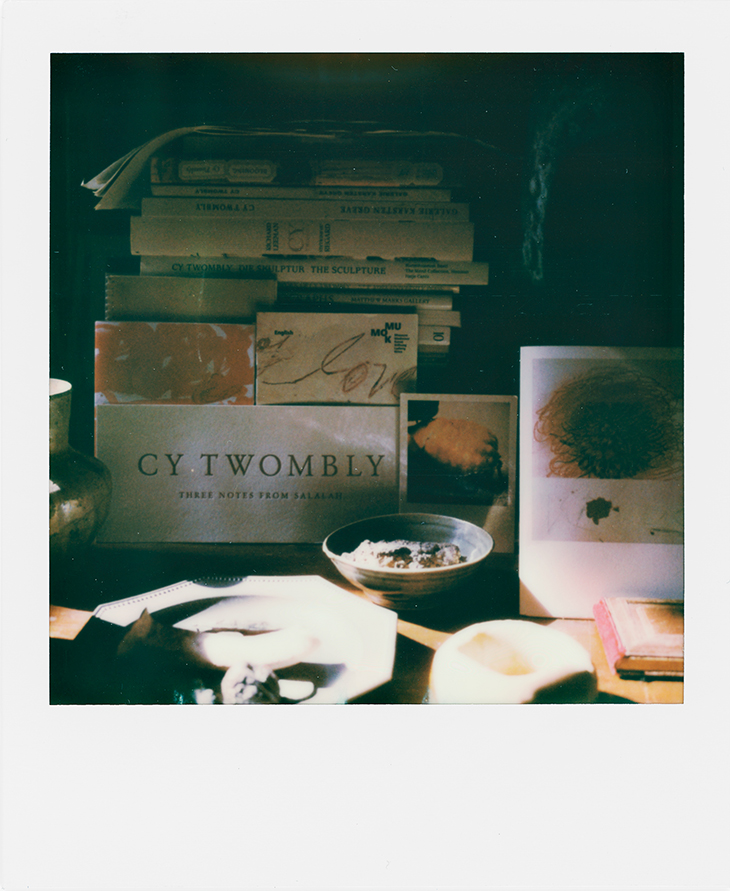
Photo: © 2021 François Halard and Libraryman
Halard first met Twombly in the 1990s, when the latter had a retrospective at MoMA, and Halard went to photograph the artist and his house for Condé Nast. This assignment fulfilled a long-held dream: the first artwork Halard ever bought, with his first big pay cheque, was a lithograph by Twombly from 1970 (Roman Notes appears more than once in these Polaroids); what’s more, he bought his house in Arles, he says, because it reminded him of Twombly’s. One of the photos that came out of that visit to Gaeta was a shot of the artist’s paint-stained work table in his studio – a hammer lying among tubes of oil snug as sardines in their boxes, tubs of acrylic, gallery postcards propped up or stacked in piles. It feels as much a ‘portrait’ of the artist as the photographs Halard took of Twombly himself, and it’s interesting to see Halard has taken a similar shot of his own paints in this series.
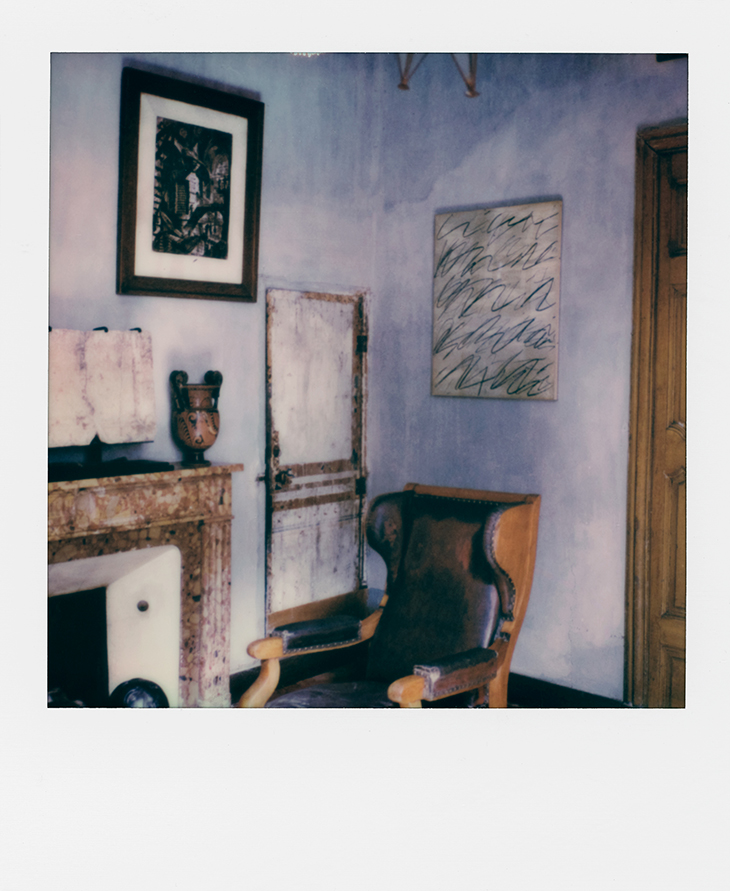
Photo: © 2021 François Halard and Libraryman
The mise en scène as portrait (or self-portrait, in the case of these Polaroids) is a running theme in Halard’s work, and is partly what makes him so successful at conjuring the presence of those absent from the spaces they inhabit, or inhabited – witness his photographs of the homes of Luigi Ghirri, Carlo Mollino, Giorgio Morandi, and Curzio Malaparte. Meanwhile, his photograph of three skulls from Cézanne’s studio in Aix-en-Provence recasts the French artist’s painting Pyramid of Skulls (c. 1901) in photographic form. A framed print of Halard’s photograph hangs against the chalky-blue walls of his entrance room, the pale skulls staring out over a table of Twombly catalogues and memorabilia, old lemon included: with a vase of dried hydrangeas, and candles waiting to be lit and snuffed out, this scene has all the elements of a vanitas – and in Halard’s Polaroid it becomes one.
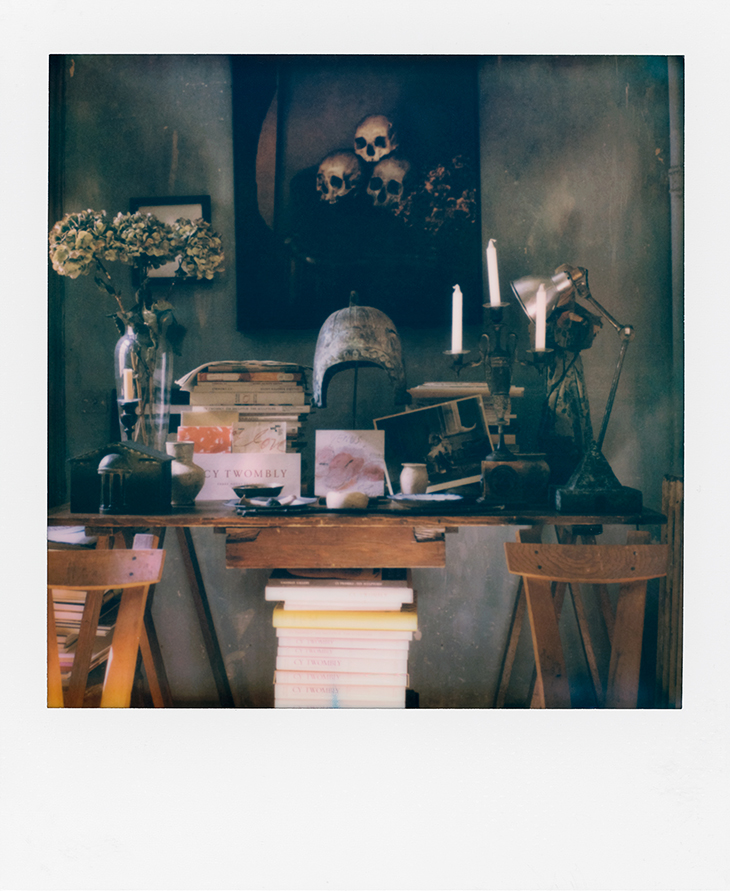
Photo: © 2021 François Halard and Libraryman
It’s another example of the visual layering he seems to delight in: a still-life Polaroid of his still-life photograph of Cézanne’s still-life tableau. Similar visual tricks, echoes and connections can be found throughout these images, and are particularly effective in the interaction between sculpture and photography. In a bedroom detail, chilly daylight animates the curves and curlicues of a rococo marble mantelpiece, which supports various treasures: a Picasso edition bought at the flea market in Nîmes three decades ago; a Hokusai woodblock print given to Halard by his wife, Isabelle. But it’s the fragments of carved marble hands and an arm that arrest the attention, and their echo in a framed photograph by Brassaï of Picasso’s hand; except that this isn’t a photograph of Picasso’s hand, but of a plaster cast of his hand. Adding yet another layer, another dimension, Halard has tucked into a corner of the frame a postcard reproduction of Brassaï’s photograph. ‘I had this postcard for years,’ he explains. ‘I never thought I would be able to have the real thing.’
Given Halard’s interest in collecting hands, it’s no surprise that Rodin makes an appearance – in the form of Albert Rudomine’s photograph from 1938 of Rodin’s sculpture La Cathédrale, two right hands touching in a sensuous, dance-like embrace. Rudomine was commissioned to photograph the collection of the Musée Rodin in Paris and – like Halard – his genius lies in the ability to transform documentation into art in its own right. The Polaroid capturing this photograph makes, of course, an eloquent cover image for a book born of a time in which touch has become something both feared and yearned for.
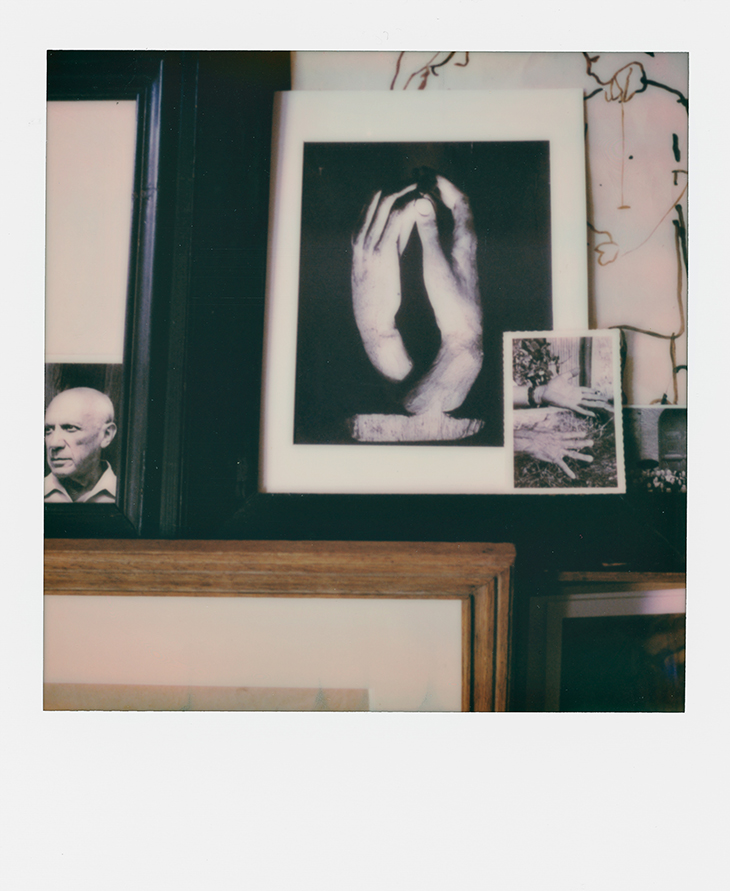
Photo: © 2021 François Halard and Libraryman
For Halard, this period of confinement recalled a significant period of his childhood. ‘I had a speaking problem for many years,’ he explains. ‘So I spent those years basically reclusive in my bedroom, and my only occupation was to look at other people’s images: fashion, photographs, paintings… this was my link to the outside world. It was really important for my mental health, to have that kind of relationship with objects and images of objects.’ Was it those objects and images, then, that gave him the confidence required for the professional life he went on to lead? ‘No, it was doing psychotherapy with a great Lacanian analyst!’
Crucially, Halard was not only looking at his immediate surroundings in those formative years but also, with a camera borrowed from his father, photographing them. Later on, he was in his mid twenties and working for decoration magazines in Paris when he was summoned to New York by Alexander Liberman, Condé Nast’s formidable editorial director. It was the 1980s, and Halard had landed – via Concorde – in the magazine publisher’s golden years, when the word ‘budget’ was a dirty one. ‘Time was unlimited,’ Halard recalls. ‘The luxury was not so much money, but to be free, to have time to do things… It was a totally different ballgame. Now you have to do your own projects to find that.’ He was recruited to photograph for the newly relaunched Vanity Fair, as well as House & Garden and Vogue. In those days he did more fashion shoots than interiors but, he says, ‘I was always trying to place the models in interiors: I used to recreate artists’ studios as sets; so I did a fake Basquiat studio, or a little movie on Joseph Beuys. I have always been driven by reference.’ His house in Arles is no exception. ‘I treat it like a set for my own living,’ he says. ‘I move things all the time, I keep adding things. So it’s like an artist’s studio in a way.’
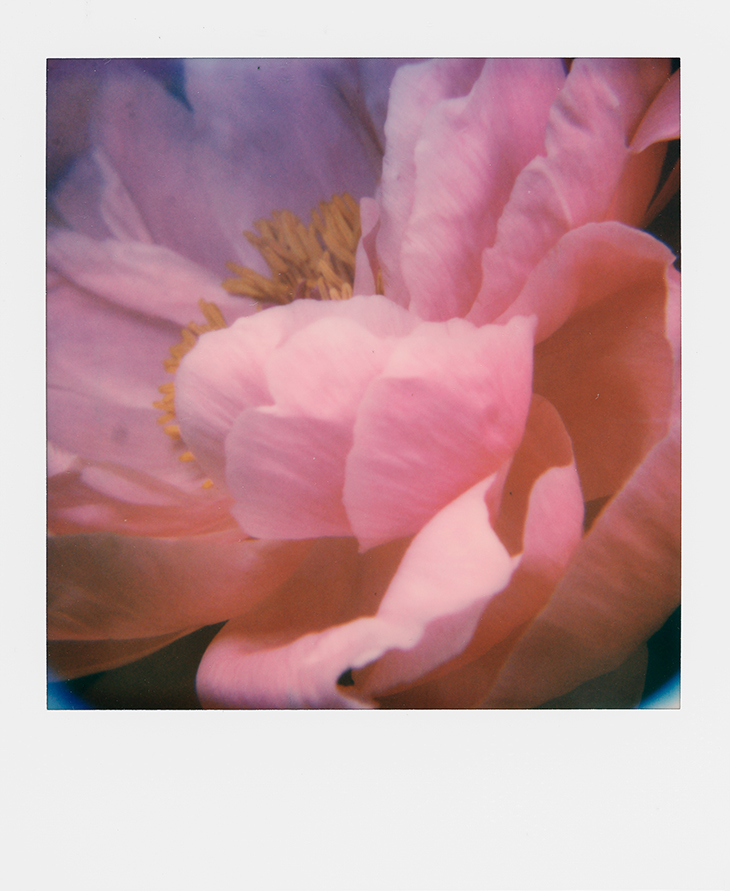
© 2021 François Halard and Libraryman
Sally Mann said of Cy Twombly that he had ‘a Proustian passion for the ephemeral’. Such a passion is visible everywhere in the scenes captured by these Polaroids, from the photograph of Cézanne’s skulls to the delicate petals of irises and peonies and that imploded old lemon. But it’s there too in the Polaroid format itself: part of the beauty of these images is the sense that they might fade away at any minute, as swiftly and ghost-like as they appeared.
François Halard: 56 Days in Arles is published by Libraryman.
Unlimited access from just $16 every 3 months
Subscribe to get unlimited and exclusive access to the top art stories, interviews and exhibition reviews.


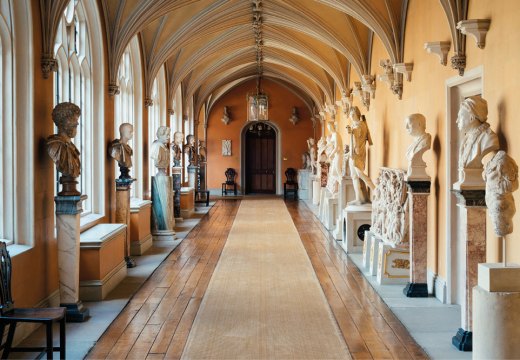
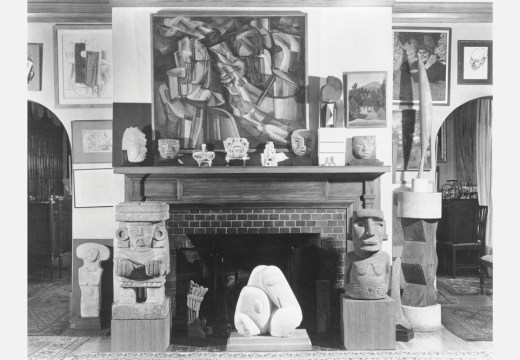
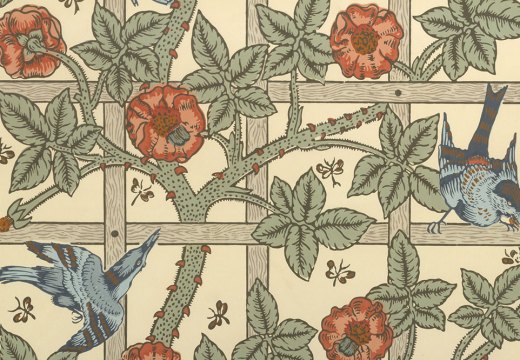









![Masterpiece [Re]discovery 2022. Photo: Ben Fisher Photography, courtesy of Masterpiece London](http://www.apollo-magazine.com/wp-content/uploads/2022/07/MPL2022_4263.jpg)
It’s time for the government of London to return to its rightful home